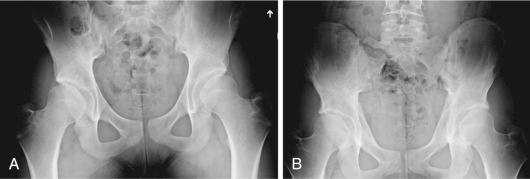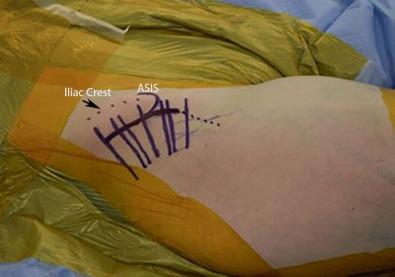Physical Address
304 North Cardinal St.
Dorchester Center, MA 02124
The Bernese periacetabular osteotomy (PAO) can improve pain and function in adolescent and young adult patients with symptomatic acetabular dysplasia and minimal degenerative changes.
PAO allows medialization of the hip center, improved lateral and anterior coverage, and correction of version abnormalities of the dysplastic acetabulum.
Hip arthroscopy and open femoral head-neck osteochondroplasty with PAO can be used to treat combined intraarticular pathology and concurrent or secondary impingement.
The Bernese periacetabular osteotomy (PAO) has become the most common treatment in North America for young patients with symptomatic pathomorphologies of the acetabulum. Most commonly, PAO is used for the treatment of developmental dysplasia of the acetabulum, but it also is used to treat global acetabular retroversion and posttraumatic deformities. In patients with classic developmental hip dysplasia (DDH), the acetabulum is shallow with variable version, while the femur most commonly demonstrates excessive antetorsion and coxa valga proximally ( Fig. 55.1 ). The femoral head remains insufficiently covered laterally and anteriorly, resulting in structural instability. Excessive joint reaction forces, increased rim loading, and articular cartilage damage can lead to secondary osteoarthritis (OA) of the hip. Because of long-term durability concerns about total hip arthroplasty (THA), the PAO was introduced as a hip preservation technique for acetabular dysplasia in young patients with hip symptoms and minimal or no degenerative changes.

The purpose of the PAO is to reorient the acetabulum in a more mechanically favorable position. Reorientation allows medialization of the hip center with improved coverage and congruency of the femoral head, thus decreasing the body weight lever arm and increasing the hip surface contact area. This reorientation improves pain, enhances function, and may decrease the risk of secondary degenerative changes.
Various pelvic osteotomy techniques have been described. The Bernese PAO developed by Ganz and colleagues in the 1980s currently is the osteotomy of choice in North America for young adults with hip dysplasia. The Bernese PAO has a number of distinct advantages. Small and large acetabular corrections can be completed with reproducible extraarticular osteotomies through a single incision. Nonunion and osteonecrosis are rare complications because the blood supply to the acetabular fragment (through the inferior gluteal artery) remains intact. The posterior column remains intact, thus increasing stability of the osteotomy and allowing early patient mobilization with limited internal fixation. The contour of the pelvis remains relatively unchanged, allowing natural childbirth in women. Pathology within the joint and at the head-neck junction can be accessed through an anterior capsulotomy. Finally, the PAO can be done without compromising the abductor and rectus tendons, thus allowing rapid rehabilitation.
PAO is indicated in young patients with symptomatic acetabular dysplasia and minimal degenerative changes. The joint must be reasonably congruent, with preserved joint space. Most patients are young adults or adolescents with a closed triradiate cartilage; however, we do offer PAO to selected active patients older than 40 years with minimal degenerative changes. Preoperative motion with hip flexion to at least 90 degrees and internal rotation to 10 degrees is ideal. In general, patients also must have a body mass index (BMI) of less than 30, have minimal (or managed) medical comorbidities, and refrain from all tobacco products before proceeding with surgery.
A standard imaging protocol is followed for all patients before PAO. Radiographs include a standing anteroposterior (AP) view of the pelvis and false profile, Dunn, and frog-leg lateral views of the affected hip. A low-radiation-dose computed tomography (CT) scan with views of the femoral condyles is obtained to assess acetabular and femoral version. Three-dimensional (3D) reconstructions of the hip also are obtained to further assess any abnormal anatomy at the head-neck junction. Finally, all patients have a magnetic resonance (MR) arthrogram of the hip to evaluate cartilage integrity and to rule out labral pathology and other etiologies of hip pain.
General anesthesia is used in most patients. The patient is placed supine on a radiolucent table with a small bump under the operative hip (raising the operative hip approximately 5 degrees from horizontal). A foot holder is secured on the bed to assist with hip flexion during the procedure. The extremity is prepared and draped with full surgical access to the hemipelvis and thigh. Before the incision is made, standard perioperative antibiotics and tranexamic acid are administered. Intraoperative fluoroscopy is used throughout the procedure to confirm osteotomy cuts and assess reduction. We no longer routinely use neuromonitoring.
We use a modified Smith-Peterson approach. The incision (typically 7–15 cm) begins proximally along the lateral aspect of the iliac crest to the anterior-superior iliac spine (ASIS). The incision then curves lateral to the ASIS and ends a variable distance from it ( Fig. 55.2 ). Subcutaneous flaps are raised and the fascia covering the tensor fasciae latae is identified. Care is taken to avoid the lateral femoral cutaneous nerve. Alternatively, a “bikini-type” incision from the iliac crest extending medial to the ASIS has been described.

A longitudinal incision is made in the fascia covering the tensor muscle belly, approximately 1 cm lateral to the ASIS. The deep interval between the tensor and the rectus femoris is then bluntly developed. More proximally in the wound, the aponeurosis of the external oblique muscle is identified and reflected off the iliac crest. The inner table of the ilium is exposed. An osteotomy of the ASIS is made to allow medial reflection of the sartorius and exposure of the anterior ilium.
Become a Clinical Tree membership for Full access and enjoy Unlimited articles
If you are a member. Log in here